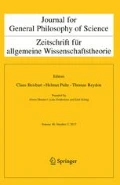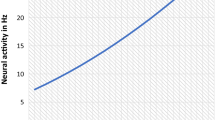Abstract
This paper proposes a biosemiotic conception of theories, as non-intentional organic theories, which is based on an analysis and comparison of philosopher Norwood Russell Hanson’s account of theories and zoologist Jakob von Uexküll’s theory of organisms. It is argued that Hanson’s proposals about scientific theories and their relation to observation are semiotic in nature and that there exists a correspondence between Hanson’s depiction of the relationship between theories, observation, and reality and von Uexküll’s views on the relationship between organisms and their environments. This correspondence supports an account of theories that depicts them as organic extensions of our perceptual physiology. Among the epistemological consequences of this account are the following: (1) The kind of correspondence that is established through theories between a subject and reality is related rather to a subject’s actions than to a faithful representation of every aspect of the world, (2) it suggests a strong emphasis on the creative aspects of knowledge acquisition, and (3) it urges a reassessment of the evolutionary epistemology of theories.
Similar content being viewed by others
Notes
It might seem a little annoying for some readers that Hanson’s approach is labeled semiotic even when he does not employ such a language, however we call both Lamarck and Darwin evolutionists although they never mention “evolution” or most of the terms that contemporary evolutionary theory employs such as fitness, gene pool, etc.
Although Hanson (1971a, 3) recognizes that there are indeed instances where sensation-reports work as scientific observations, however they are not typical and also are radically different from observing, for instance, that an electrical short-circuit just occurred.
This is one of the aspects where Peirce’s influence on Hanson is most noticeable, since Hanson’s account of experiential meaning is akin to Peirce’s pragmatic maxim: “Consider what effects, which might conceivably have practical bearings, we conceive the object of our conception to have. Then our conception of these effects is the whole of our conception of the object” (Peirce as cited by Short 2007, 58).
It is remarkable (and slightly paradoxical, to be honest), that in his reply to what we have judged as a wrong construal of the notion of theory-ladenness, which separates perception and interpretation, Short (2007, 318–319) reconstructs Peirce’s position in a strikingly similar way to the one in which we have described Hanson’s view on the relationship between theory and observation.
Among the papers which deal with the relationship between Darwin and von Uexküll, Kull (1999b) analyzes von Uexküll’s view of evolution and contrasts it with other evolutionary views (including Darwinism), while Suárez Pascal (2017) approaches both Darwinian and Uexküllian accounts from an axiological perspective.
References
Bradie, M. (1986). Assessing evolutionary epistemology. Biology and Philosophy. https://doi.org/10.1007/BF00140962.
Bradie, M., & Harms, W. (2020). Evolutionary epistemology. In E. N. Zalta (Ed.), The Stanford encyclopedia of philosophy. Berlin: Springer.
Brentari, C. (2015). Jakob von Uexküll: The discovery of the Umwelt between biosemiotics and theoretical biology. New York: Springer.
Deacon, T. W. (1997). The Symbolic Species: The Co-evolution of Language and the Brain. New York: W. W. Norton & Company.
Deely, J. N. (1990). Basics of semiotics. Bloomington: Indiana University Press.
Gontier, N. (2006). Introduction to evolutionary epistemology, language and culture. In N. Gontier, J. P. van Bendegem, & D. Aerts (Eds.), Evolutionary epistemology, language and culture: A non-adaptationist, systems theoretical approach (pp. 1–29). Dordrecht: Springer.
Gontier, N., & Bradie, M. (2018). Acquiring knowledge on species-specific biorealities: The applied evolutionary epistemological approach. In R. Joyce (Ed.), The Routledge handbook of evolution and philosophy (pp. 136–152). New York: Routledge.
Hanson, N. R. (1958). Patterns of discovery: An inquiry into the conceptual foundations of science. Cambridge: Cambridge University Press.
Hanson, N. R. (1960). Is there a logic of scientific discovery? Australasian Journal of Philosophy. https://doi.org/10.1080/00048406085200111.
Hanson, N. R. (1967). An anatomy of discovery. The Journal of Philosophy, 64, 321–352.
Hanson, N. R. (1969). Logical positivism and the interpretation of scientific theories. In P. Achinstein & S. Barker (Eds.), The legacy of logical positivism (pp. 57–84). Baltimore: The John Hopkins Press.
Hanson, N. R. (1971a). Observation and explanation: A guide to philosophy of science. London: George Allen & Unwin.
Hanson, N. R. (1971b). A picture theory of theory-meaning. In What I do not believe, and other essays (pp. 3–49). New York: Springer.
Hoffmeyer, J. (1996). Signs of meaning in the universe. Bloomington: Indiana University Press.
Hoffmeyer, J. (2008). Biosemiotics: An examination into the signs of life and the life of signs. Chicago: University of Chicago Press.
Kuhn, T. S. (1970). The structure of scientific revolutions (2d ed.). Chicago: Chicago University Press.
Kull, K. (1999a). On the history of joining bio with semio: FS rothschild and the biosemiotics rules. Σημειωτκή - Sign Systems Studies, 27, 128–138.
Kull, K. (1999b). Umwelt and evolution: From Uexküll to post-Darwinism. In E. Taborsky (Ed.), Semiosis, evolution, energy: Towards a reconceptualization of the sign (pp. 53–70). Aachen: Shaker Verlag.
Kull, K. (2004). Uexküll and the post-modern evolutionism. Σημειωτκή - Sign Systems Studies, 32, 99–114.
Kull, K. (2009). Vegetative, animal, and cultural semiosis: The semiotic threshold zones. Cognitive Semiotics, 4, 8–27.
Kull, K. (2014). Adaptive evolution without natural selection. Biological Journal of the Linnean Society. https://doi.org/10.1111/bij.12124.
Kull, K., Deacon, T., Emmeche, C., Hoffmeyer, J., & Stjernfelt, F. (2009). Theses on biosemiotics: Prolegomena to a theoretical biology. Biological Theory. https://doi.org/10.1162/biot.2009.4.2.167.
Laland, K. N., Uller, T., Feldman, M. W., Sterelny, K., Müller, G. B., Moczek, A., et al. (2015). The extended evolutionary synthesis: Its structure, assumptions and predictions. Proceedings of the Royal Society B: Biological Sciences. https://doi.org/10.1098/rspb.2015.1019.
Lorenz, K. (1941). Kants Lehre vom apriorischen im Lichte gegenwärtiger Biologie. Blätter für Deutsche Philosophie, 15, 94–125.
Lund, M. D. (2010). N. R. Hanson: Observation, discovery, and scientific change. Amherst: Humanity Books.
Munz, P. (1993). Philosophical Darwinism: On the origin of knowledge by means of natural selection. London: Routledge.
Pigliucci, M., & Müller, G. (Eds.). (2010). Evolution, the extended synthesis. Cambridge: MIT Press.
Pihlström, S. (2012). A new look at Wittgenstein and pragmatism. European Journal of Pragmatism and American Philosophy. https://doi.org/10.4000/ejpap.715.
Queiroz, J., Emmeche, C., Kull, K., & El-Hani, C. (2011). The biosemiotic approach in biology: Theoretical bases and applied models. In G. Terzis & R. Arp (Eds.), Information and living systems: Philosophical and scientific perspectives (pp. 91–129). Cambridge: MIT Press.
Renzi, B. G., & Napolitano, G. (2011). Evolutionary analogies: Is the process of scientific change analogous to the organic change? Newcastle: Cambridge Scholars Publishing.
Sarto-Jackson, I. (2019). Converging concepts of evolutionary epistemology and cognitive biology within a framework of the extended evolutionary synthesis. Journal for General Philosophy of Science. https://doi.org/10.1007/s10838-019-09479-1.
Sharov, A. A. (2016). Evolutionary biosemiotics and multilevel construction networks. Biosemiotics. https://doi.org/10.1007/s12304-016-9269-0.
Short, T. L. (2007). Peirce’s theory of signs. New York: Cambridge University Press.
Suárez Pascal, C. D. (2017). Merging biological metaphors. Creativity, Darwinism and biosemiotics. Biosemiotics. https://doi.org/10.1007/s12304-017-9297-4.
Thagard, P. (1980). Against evolutionary epistemology. PSA: Proceedings of the Biennial Meeting of the Philosophy of Science Association, 1980(1), 187–196.
van Fraassen, B. C. (1980). The scientific image. Oxford: Oxford University Press.
von Uexküll, J. (1921). Umwelt und Innenwelt der Tiere (2nd ed.). Berlin: Verlag von Julius Springer.
von Uexküll, J. (1982). The theory of meaning. Semiotica, 42, 25–82.
Vollmer, G. (1987). What evolutionary epistemology is not. In W. Callebaut & R. Pinxten (Eds.), Evolutionary epistemology (pp. 203–221). Dordrecht: Springer.
Vollmer, G. (2019). Karl Popper und das Forschungsprogramm der Evolutionären Erkenntnistheorie. In G. Franco (Ed.), Handbuch Karl Popper (pp. 417–432). Wiesbaden: Springer VS.
Wheeler, W. (2008). “Do not block the path of inquiry!”: Peircean abduction, the tacit dimension, and biosemiotic creativity in nature and culture. The American Journal of Semiotics. https://doi.org/10.5840/ajs2008241/312.
Wuketits, F. (2006). Evolutionary epistemology: The non-adaptationist approach. In N. Gontier, J. P. van Bendegem, & D. Aerts (Eds.), Evolutionary epistemology, language and culture: A non-adaptationist, systems theoretical approach (pp. 33–46). Dordrecht: Springer.
Acknowledgements
I am grateful to Nathalie Gontier for her encouragement to write this paper, and to the anonymous referees for their insightful comments; they forced me to improve it significantly. Writing of this paper was partially supported by the Programa de Becas Posdoctorales, DGAPA, UNAM.
Funding
Writing of this paper was partially supported by the Programa de Becas Posdoctorales, DGAPA, UNAM.
Author information
Authors and Affiliations
Corresponding author
Ethics declarations
Conflict of interest
The author declares that he has no conflict of interest.
Additional information
Publisher's Note
Springer Nature remains neutral with regard to jurisdictional claims in published maps and institutional affiliations.
Rights and permissions
About this article
Cite this article
Suárez Pascal, C.D. N. R. Hanson and von Uexküll: A Biosemiotic and Evolutionary Account of Theories. J Gen Philos Sci 52, 247–261 (2021). https://doi.org/10.1007/s10838-021-09552-8
Accepted:
Published:
Issue Date:
DOI: https://doi.org/10.1007/s10838-021-09552-8




